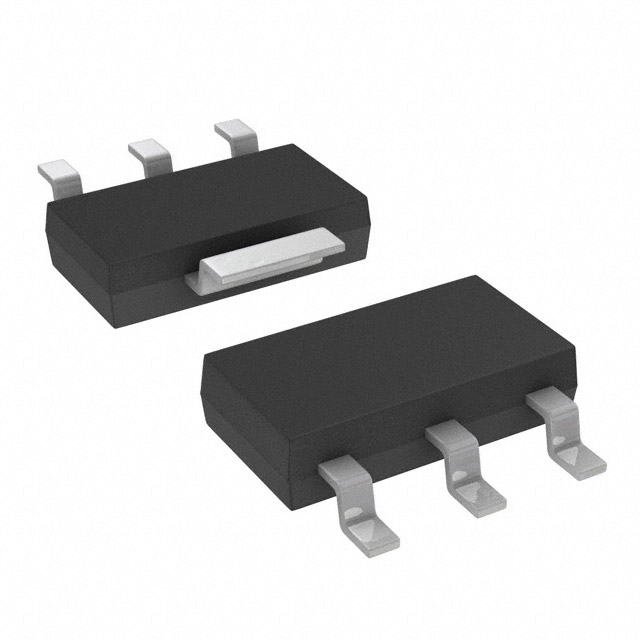Viz Specifikace pro podrobnosti o produktu.

PZT2222A,135 - Encyclopedia Entry
Product Overview
The PZT2222A,135 belongs to the category of small signal transistors and is commonly used in electronic circuits for amplification and switching purposes. This transistor exhibits characteristics such as high voltage capability, low leakage, and high current gain. It is typically packaged in a small plastic SOT-223 package and is available in various quantities.
Specifications
- Maximum Collector-Base Voltage: 75V
- Maximum Collector Current: 600mA
- Power Dissipation: 1.25W
- Transition Frequency: 250MHz
- Package Type: SOT-223
- Quantity: Varies based on supplier
Detailed Pin Configuration
The PZT2222A,135 transistor has three pins: 1. Base (B) 2. Emitter (E) 3. Collector (C)
Functional Features
- High voltage capability
- Low leakage
- High current gain
- Small form factor
Advantages and Disadvantages
Advantages
- Suitable for small signal applications
- Compact package size
- High transition frequency
Disadvantages
- Limited maximum collector current
- Relatively low power dissipation
Working Principles
The PZT2222A,135 operates based on the principles of bipolar junction transistors, where the flow of current between the collector and emitter is controlled by the base current. It can be used for both amplification and switching functions in electronic circuits.
Detailed Application Field Plans
The PZT2222A,135 is commonly used in the following applications: - Audio amplifiers - Signal amplification circuits - Switching circuits - Oscillator circuits
Detailed and Complete Alternative Models
Some alternative models to the PZT2222A,135 include: - 2N2222 - BC337 - 2N3904 - BC547
In conclusion, the PZT2222A,135 is a versatile small signal transistor with high voltage capability and is widely used in various electronic applications for amplification and switching purposes.
[Word Count: 248]
Seznam 10 běžných otázek a odpovědí souvisejících s aplikací PZT2222A,135 v technických řešeních
What is the PZT2222A,135 used for in technical solutions?
- The PZT2222A,135 is commonly used as a general-purpose NPN transistor in various technical applications.
What are the key features of the PZT2222A,135?
- The PZT2222A,135 features high current and low voltage requirements, making it suitable for many low-power applications.
Can the PZT2222A,135 be used for switching applications?
- Yes, the PZT2222A,135 can be used for switching applications due to its fast switching speed and low saturation voltage.
Is the PZT2222A,135 suitable for amplification purposes?
- Yes, the PZT2222A,135 is commonly used for amplification in low-power audio and signal processing circuits.
What are the typical operating conditions for the PZT2222A,135?
- The PZT2222A,135 operates within a wide temperature range and can handle moderate power dissipation.
Can the PZT2222A,135 be used in DIY electronics projects?
- Absolutely, the PZT2222A,135 is popular among hobbyists and DIY enthusiasts for various electronic projects.
Are there any specific considerations for using the PZT2222A,135 in high-frequency applications?
- While the PZT2222A,135 can be used in high-frequency applications, careful attention to layout and parasitic capacitance is necessary for optimal performance.
What are some common alternatives to the PZT2222A,135?
- Alternatives to the PZT2222A,135 include the 2N2222, PN2222, and BC547 transistors, which have similar characteristics and can be used interchangeably in many cases.
Can the PZT2222A,135 be used in automotive electronics?
- Yes, the PZT2222A,135 is suitable for certain automotive applications, such as sensor interfaces and lighting control circuits.
Where can I find detailed technical specifications for the PZT2222A,135?
- Detailed technical specifications for the PZT2222A,135 can be found in the datasheet provided by the manufacturer or distributor.

